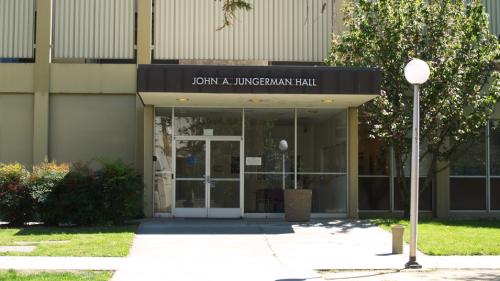
A long and proud lineage
Crocker Nuclear Laboratory (CNL) at UC Davis was named in commemoration of Crocker Radiation Laboratory on the UC Berkeley campus and in honor of the man who funded the construction of that facility in 1936, William H. Crocker (1861-1937).
The Berkeley lab was built around a 60-inch cyclotron, the largest and most powerful particle accelerator in existence when it was first switched on in 1939. Designed by renowned physicist Ernest O. Lawrence and colleagues, the cyclotron was used to conduct groundbreaking research in numerous fields, including nuclear physics and the use of radiation for the treatment of cancer.
Program diversity
In 1965—after nearly three decades of service at Berkeley—the cyclotron’s magnets and associated equipment were transported to UC Davis where members of the physics department incorporated them into the heart of a new and powerful, variable energy, 76-inch, sector-focusing particle accelerator.
Since then, researchers and staff at Crocker Nuclear Laboratory and UC Davis have continued the proud traditions of the original lab by expanding work into a diversity of fields, including non-destructive analysis of historical documents; air quality research; investigating the effects of radiation on aerospace electronics; and proton therapy radiation treatment of ocular melanoma.
CNL today
Today CNL continues to host a diverse group of programs. In recognition of its unique potential to foster interdisciplinary research, CNL has been designated one of 10 “organized research units” on the UC Davis campus. As such, it is not affiliated with any single department, but is overseen by the UC Davis Office of Research.
